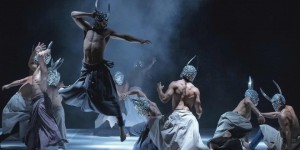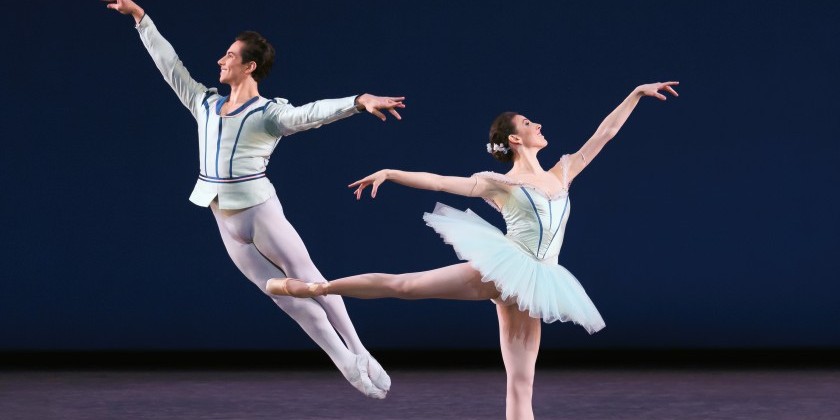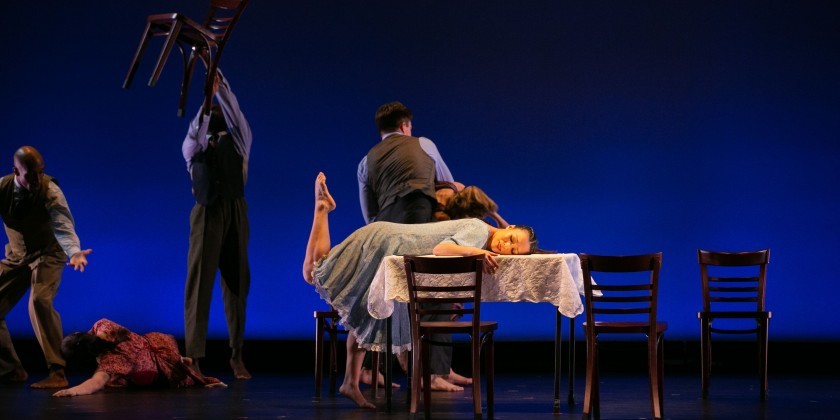IMPRESSIONS: Compagnie Hervé Koubi's Astonishing “Sol Invictus” at The Joyce Theater
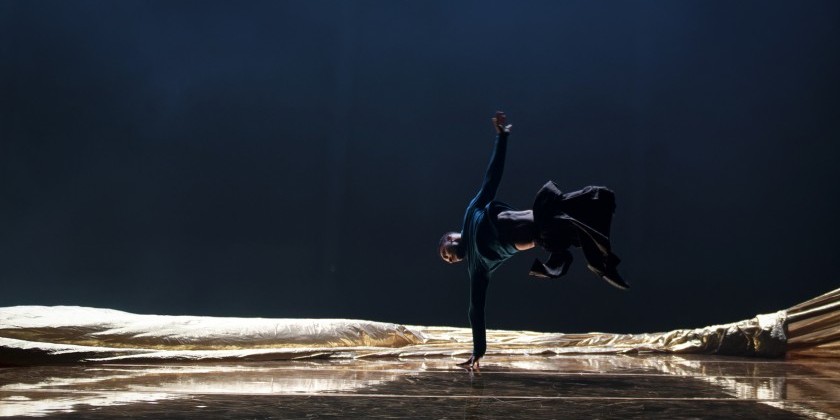
Choreographer: Hervé Koubi
Assistant Choreographer: Faycal Hamlat
Music: Mikael Karlsson, Maxime Bodson, Steve Reich, Ludwig van Beethoven
Arrangements: Guillaume Gabriel
Lighting: Lionel Buzonie
Costumes: Guillaume Gabriel
Artistic Advisor: Bérengère Alfort
External Advisors: Odile Cougoule, Mohamed Zerouali
Dancers: Ilnur Bashirov, Francesca Bazzucchi, Badr Benr Guibi, Joy Isabella Brown, Denis Chernykh, Samuel da Silveira Lima, Youssef El Kanfoudi, Mauricio Farias da Silva, Abdelghani Ferradji, Elder Matheus Freitas Fernandes Oliveira, Hsuan-Hung Hsu, Pavel Krupa, Ismail Oubbajaddi, Ediomar Pinherio de Queiroz, Allan Sobral dos Santos, Anderson Vitor Santos, Karn Steiner, El Houssaini Zahid
Venue: The Joyce Theater
Dates: January 25 - 28, 2024
At the age of 25, upon his father’s deathbed revelation, French contemporary choreographer Hervé Koubi discovered he was of Algerian heritage. In 2009, he went in search of his roots, grew fascinated by Algeria’s urban dance culture, and formed Compagnie Hervé KOUBI. Originally composed of street dancers primarily from North Africa, Koubi’s Calais-based troupe now comprises an expanded roster of international performers and proffers an imaginative, dare-devil approach to street dance that is nothing short of jaw-dropping. Their latest evening-length work, Sol Invictus, choreographed by Koubi, premiered in Monaco in December and, in January, was presented at the Joyce Theater.
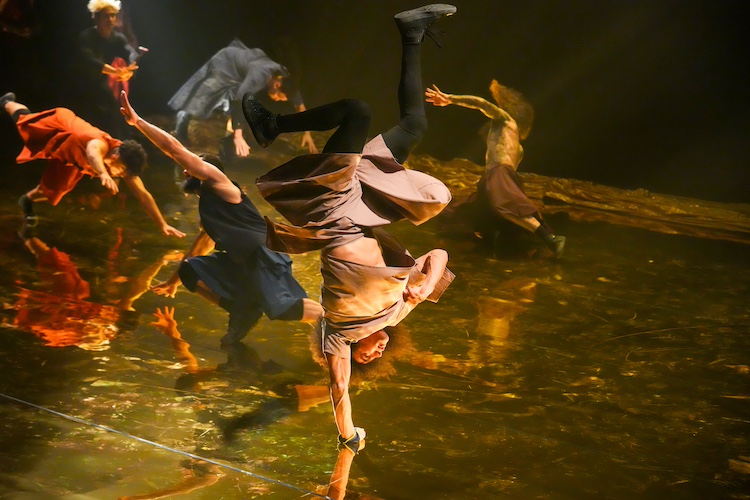
Watching the 75-minute work, I was absolutely astonished by its acrobatic components, and often stumped as to how the dancers made their bodies do the amazing feats I was witnessing. Dazzling athletes, they take aerial flips, flying twists, one-armed hand-stand freezes, and classic b-boy head-spins to stratospheric new levels.
Intimidating from the get-go, the piece begins with its 18-member cast of men and women — all clad in black lace-up shoes and socks, and loose shin-length culottes -- slowly assembling along the sides of the stage. A lone, agitated dancer walks in circles center-stage. Glaring threateningly at each of the others and at us, he gradually speeds up to a running pace. Suddenly (and who knows how!), he contorts into an inverted arched pose of confounding complexity, signaling the sort of startles that permeate the work. As additional dancers join in the action, it starts to feel like a team of martial artists warming-up – yet all exercising separately, in individualized fashions. They kick, spiral, somersault, and run with quick, long strides, low to the ground, and sometimes tilted sideward in a three-legged animalistic manner, with one hand taking a step in between the footfalls.

More akin to capoeira than breaking, the deliciously fluid choreography is built of arcs. It’s not as angular and percussive as most hip-hop styles, nor blatantly showy or competitive. It intimidates in the making of bold independent statements of breathtaking beauty, not to initiate battles nor even to entertain. For example, an upside-down supersonic spin, done on two hands placed atop one another, recalls a Brancusi “Bird in Space,” the dancer’s elbows, torso, and legs stretching into elegant curves of an elongated oval.
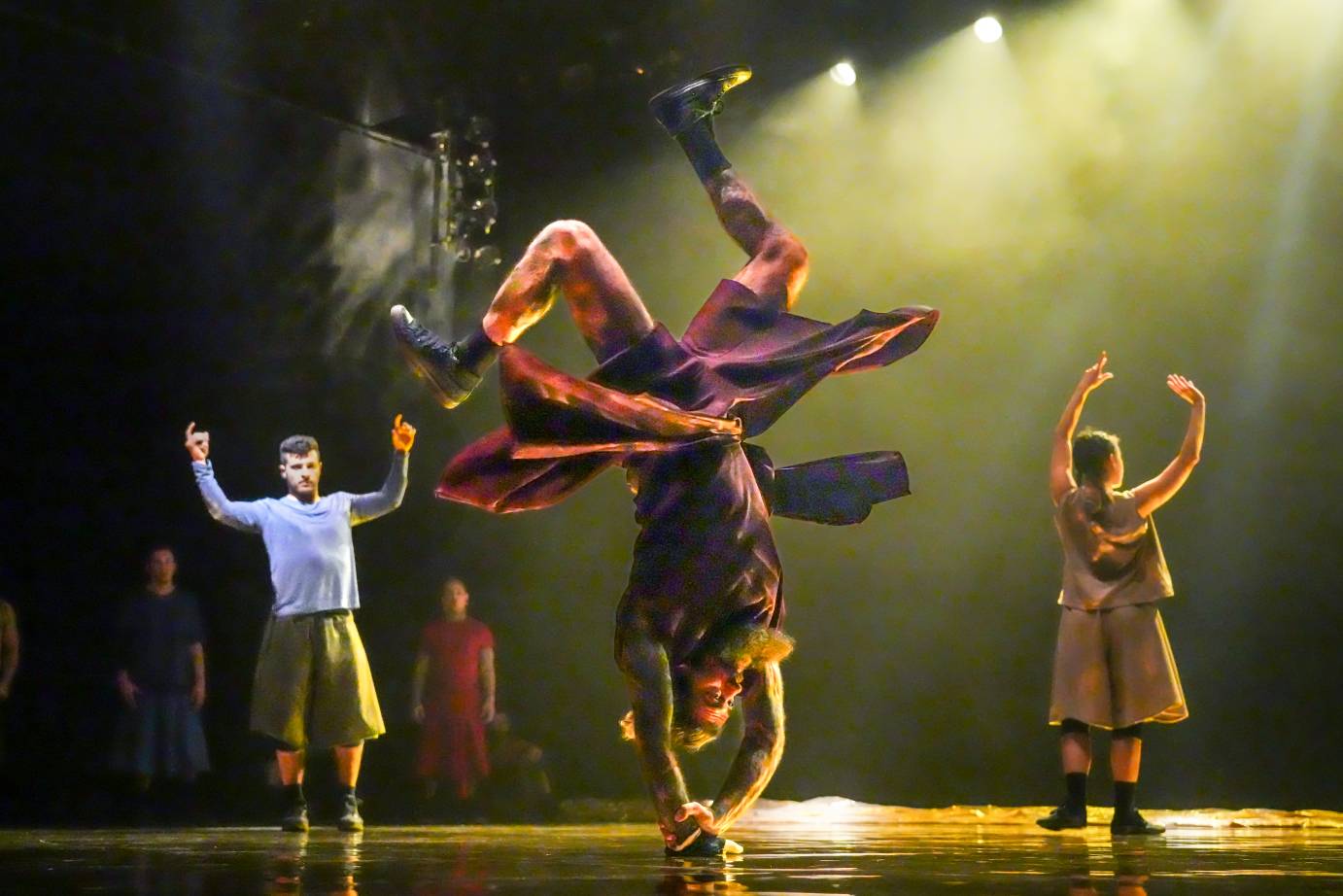
The work’s opening phrases are performed in silence. But a stimulating score — comprising music by contemporary Swedish composer Mikael Karlsson, electronic sounds by Maxime Bodson, and excerpts from Steve Reich and Ludwig van Beethoven — soon propels the dance. The variegated accompaniment corresponds to choreographic shifts. What feels like revving up rituals full of free-spirited solo tricks are followed by slower, more communal passages of legato phrases. Rhythmic percussion sparks the introduction of a folk-dance motif — jumpy little kicks done with curved arms reaching sideways, palms up, face skyward, and a high arch in the chest. Pulsating digital music evokes a sci-fi feel as dancers flatten hands to forehead in an odd crown-shaped gesture. And when the score turns into irresistible dance music, we feel the conjuring of a club scene, with suggestions of social dancing, posing, and preening to attract a partner.
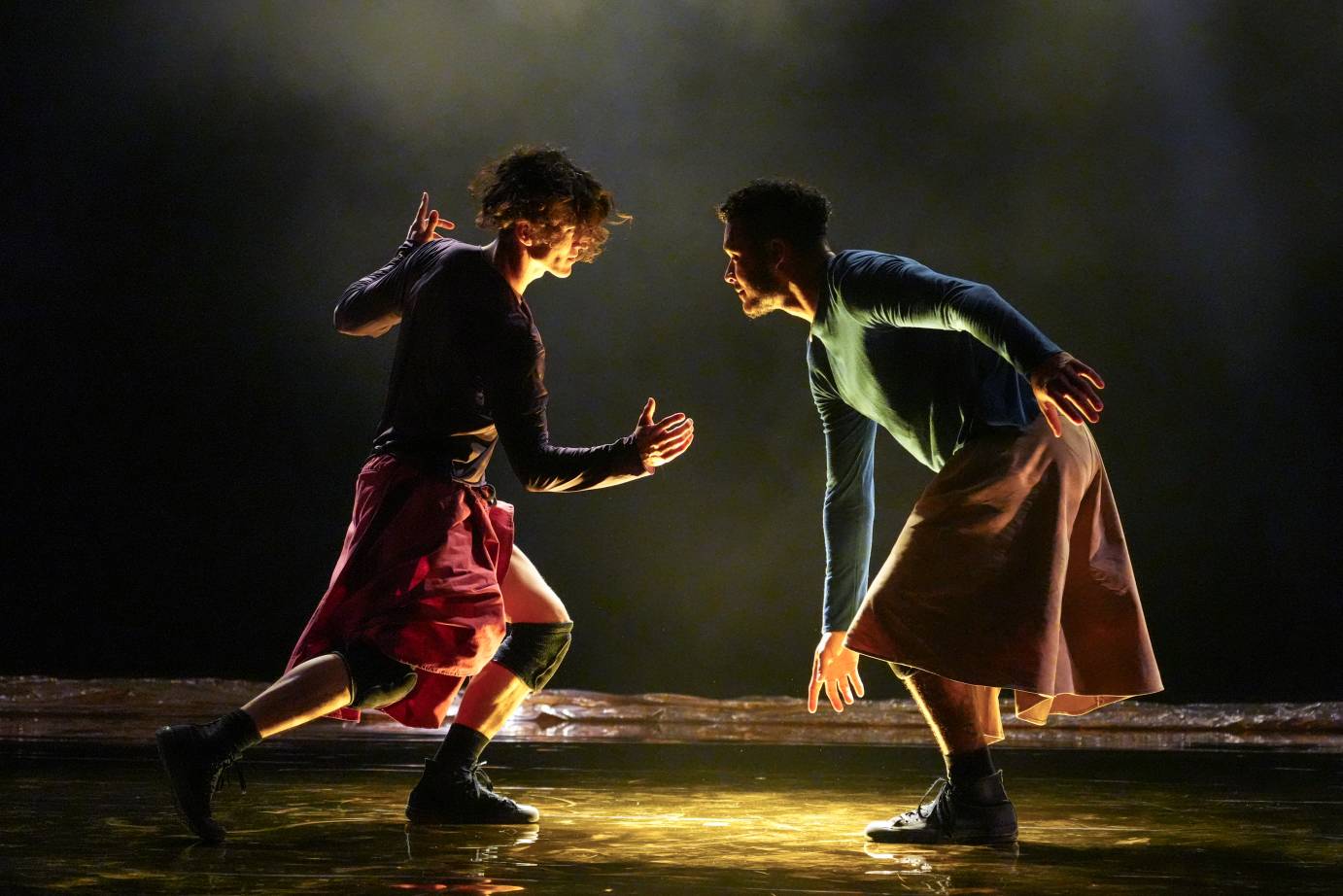
Despite their differences, the separate choreographic sections shift smoothly from one to the next and don’t really register as discrete segments. However, at about the half-way point, the lights black out and the piece comes to a momentary stop. The night I attended, this elicited rafter-raising applause and, unfortunately, repeat occurrences of the like. Because of the choreography’s flowing nature, prior to this point in the show viewers had no designated opportunity to express their appreciation. But from here on, they felt free to applaud each time an individual performer executed a particularly wowing move. I longed for the days before dance audiences became composed of interactive-accustomed spectators who need to broadcast their feelings about everything, moment by moment. But more importantly, the audience’s frequent outbursts undermined the most remarkable aspect of the work -- its organic integration of the physically amazing.
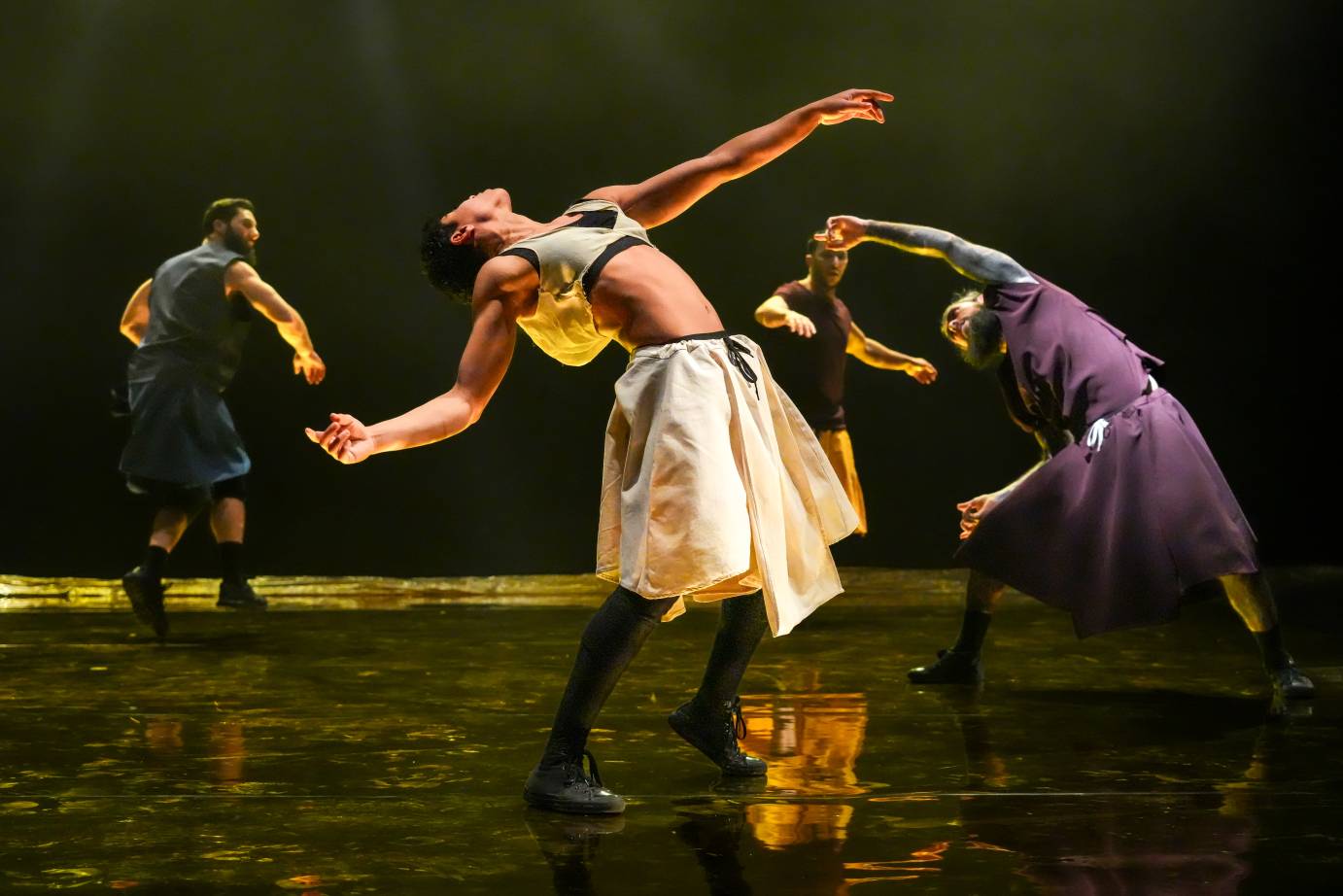
Koubi’s choreography is so holistically crafted that the astounding acrobatics contained within it come as moments of surprise tightly nestled within the larger fabric of the dance. They function as punctuation, not as targets or highpoints, and come to feel like natural little breaths amid the less shocking, though no less interesting, movements of the overall work. Applauding them feels like a slap in the face of the choreographic artistry.
The production is also not enhanced by its hackneyed inclusion of a stage-size, silky cloth, of the ilk that became a modern-dance cliché some decades ago, when every time a choreographer ran out of movement ideas it appeared onstage for the dancers to pretentiously lift, lower, or configure themselves underneath. Here, strikingly lit by Lionel Buzonie, the cloth takes on a golden glimmer, presumably a solar reference (as the work’s Latin title translates to “unconquered sun”). Though impressively used to drag a head-spinning dancer across the stage, the prop is unnecessary.

Equally superfluous are the few occasions when individual dancers are held aloft, god-like, and carried around majestically. Such hints at narrative content go undeveloped and feel unwelcome. Koubi’s stirring work is not an expression of ideas beyond its movements, but rather a supreme demonstration of how captivating we can be when we dance. And what do I mean by captivating? Try this: take the most screen-addicted, social media-obsessed Gen Z-er you know to this performance and I’ll bet they sit awestruck for a full hour-and-a-quarter, without once “needing” to check their mobile device.






